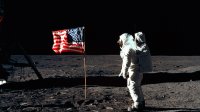Applying the Scientific Method in History Class
Using a key concept from science class in history encourages high school students to analyze data with a willingness to make mistakes.
Your content has been saved!
Go to My Saved Content.In the 1980 movie Star Wars: The Empire Strikes Back, Yoda says, “Do or do not; there is no try.” As nice of a sentiment as that is, it doesn’t apply to the scientific method. The scientific method, the cornerstone of STEM education, is about trying, a willingness to challenge original assumptions and revise a hypothesis. A researcher doesn’t know if their hypothesis will work, but the point is to test and evaluate. In class, teachers want students to take risks. Some of the most meaningful learning takes place in the context of failure, but many students are afraid of that for various reasons, such as not wanting to appear foolish or disappoint the adults in their life.
The scientific method, on the other hand, leaves open the possibility of being wrong. It involves forming an hypothesis, collecting data, testing, and analyzing results to determine whether the hypothesis is true. No matter the outcome, the scientists take the risk of being wrong or rejecting their hypothesis. This can apply to the high school history classroom. History teachers can cultivate that willingness to make mistakes, thus giving learning deeper meaning, by reimagining the history of science, reading diverse primary sources, and beginning with no end in mind.
Reimagining the history of science
In most state standards, there’s mention of scientists; AP European History includes individuals such as Copernicus, Newton, and William Harvey and their accomplishments. They’re the ones, utilizing the scientific method regarding observed phenomena, who collected data, formed theories, presented findings, and “got it right.” They’re celebrated, and rightfully so, because of their scientific contributions. To enrich and promote curiosity while removing a fear of failure, however, teachers can include examples from these scientists that did not “get it right.”
Isaac Newton, despite developing calculus, remained fascinated with alchemy, whereby he wanted to find a “philosopher’s stone” that could turn other metals into gold. Likewise, Copernicus’s theory of the heliocentric universe radically changed astronomy; however, there’s debate regarding his belief in astrology, a system that holds that planets influence human behavior. Even in discussing something more modern, such as space exploration, the Challenger disaster (1986) juxtaposes the moon landing (1969). Including both successes and failures in the history of science models for students the fact that taking risks and being wrong are part of the process.
Reading diverse primary sources
Historiography, the study of historical writing, encompasses how historians create history. The main way that historians craft a narrative is reading a diverse set of primary sources. They approach those sources with a critical focus because people deliberately mislead, are confused, or don’t have the full picture. Thus, it’s important to be mindful that any primary source might not be fully accurate. Reading varying, and often contradictory, primary sources mirrors the approach of the scientific method by continuously retesting and reevaluating, in light of evidence, assumptions about the past.
For example, there was a question in a past AP U.S. History exam that contrasted views on the American Revolution between John Adams and Benjamin Rush. Adams stated that the revolution had nothing to do with the actual war, but rather it was the process leading up to the “shot heard round the world.” Rush, however, believed that the revolution occurred after the war with the creation of the U.S. Constitution and establishing a federal government. Having students examine two different views on the American Revolution promotes a scientific approach to the past by reevaluating one hypothesis that the revolution was the war against Britain and not something more ideologically complicated.
No end in mind
Throughout my career as an educator, I’ve consistently been told to “begin with the end in mind.” Certainly, teachers should have an objective and goal for each lesson. With high-stakes testing, teachers need a laser focus on their curricula. Scientists, to start the scientific method, do form hypotheses when conducting experiments; however, they also have freedom to be surprised by data and form new conclusions. There’s always a willingness to change one’s mind in light of new evidence. In this way, there really is not a particular end in mind because there is no end in science.
In that regard, students can remove the fear of being wrong because there isn’t a definitive right answer. History teachers can model this idea by highlighting different interpretations of the past. For example, historians of the 1950s might have viewed the 1920s as “roaring,” whereas historians today focus on the inequality of that era. Changing interpretations are often the result of the discovery of new sources and contemporary historians’ bringing their own values and perspectives to primary sources. They mirror the scientific method in how it does not end.
History isn’t a list of facts. It’s an interpretation of the past, and interpretations can change. Similarly, the scientific method includes critical analysis of data and an openness to be wrong. Both historical inquiry and scientific research employ similar skills, and that can enrich learning experiences for students. This promotes a willingness to be wrong, making the classroom safer for students to take academic risks.
